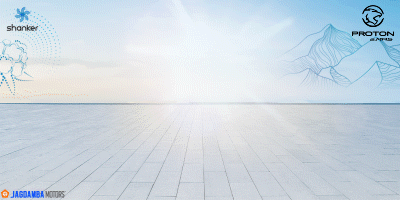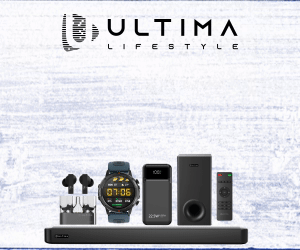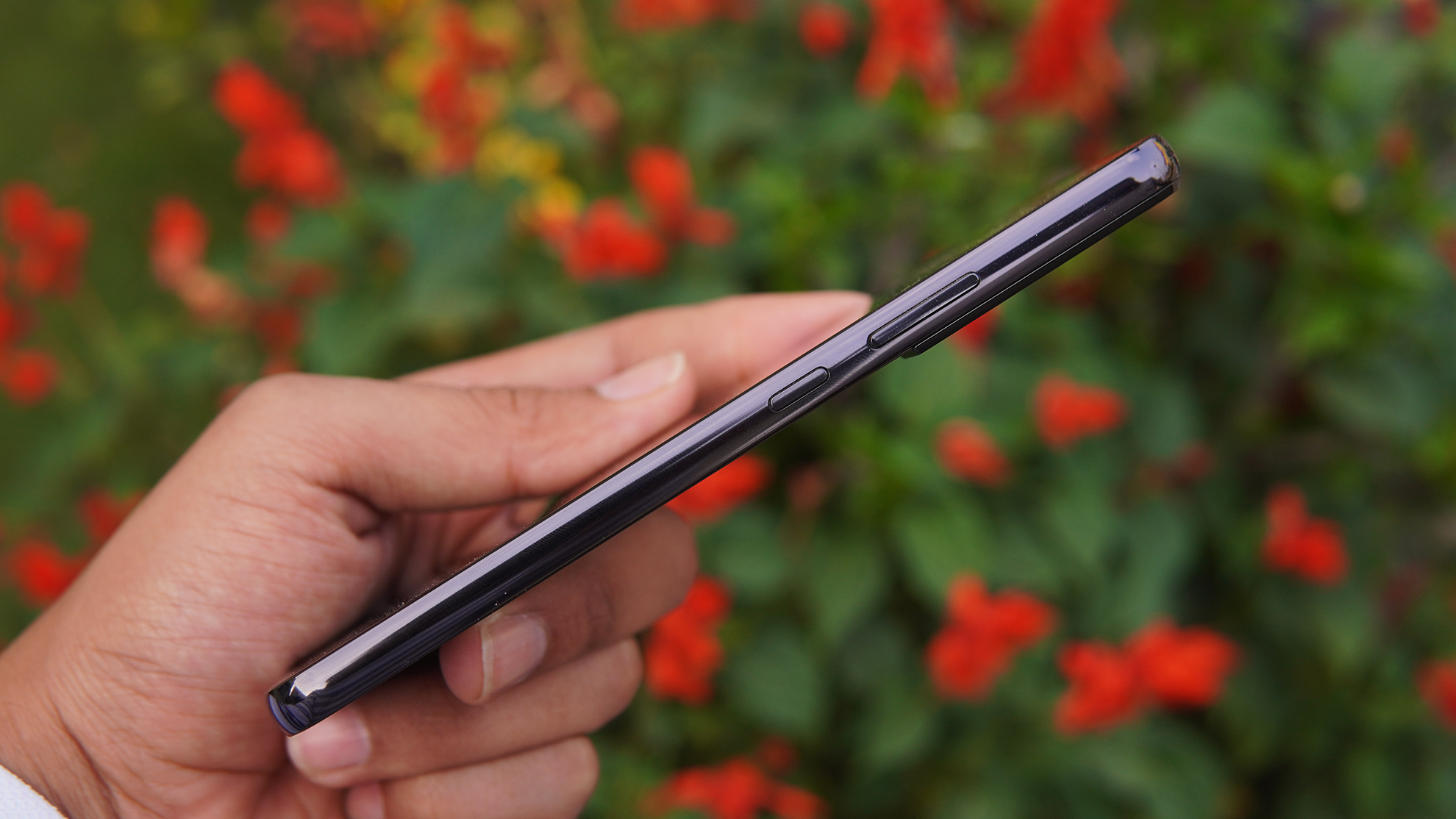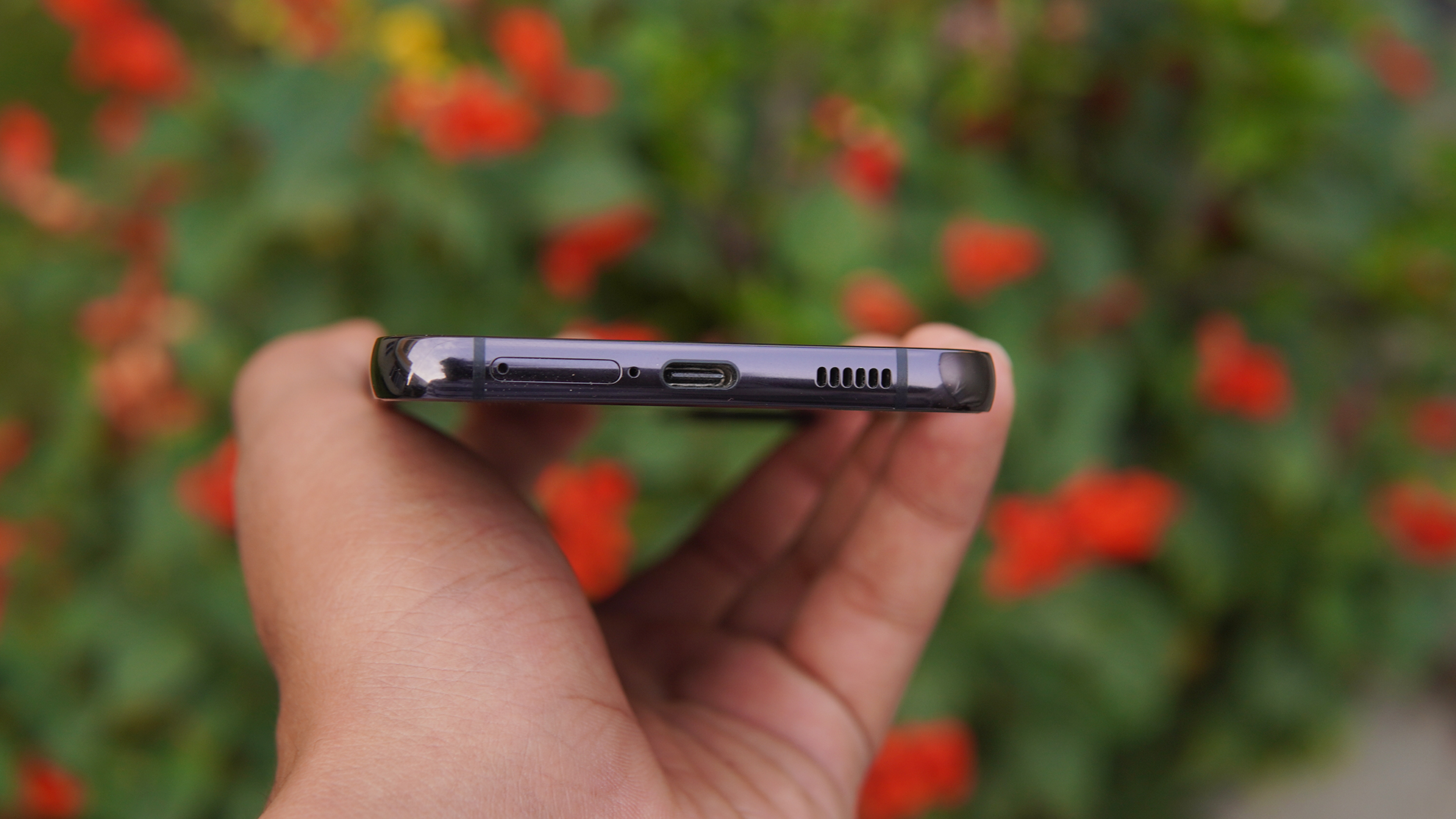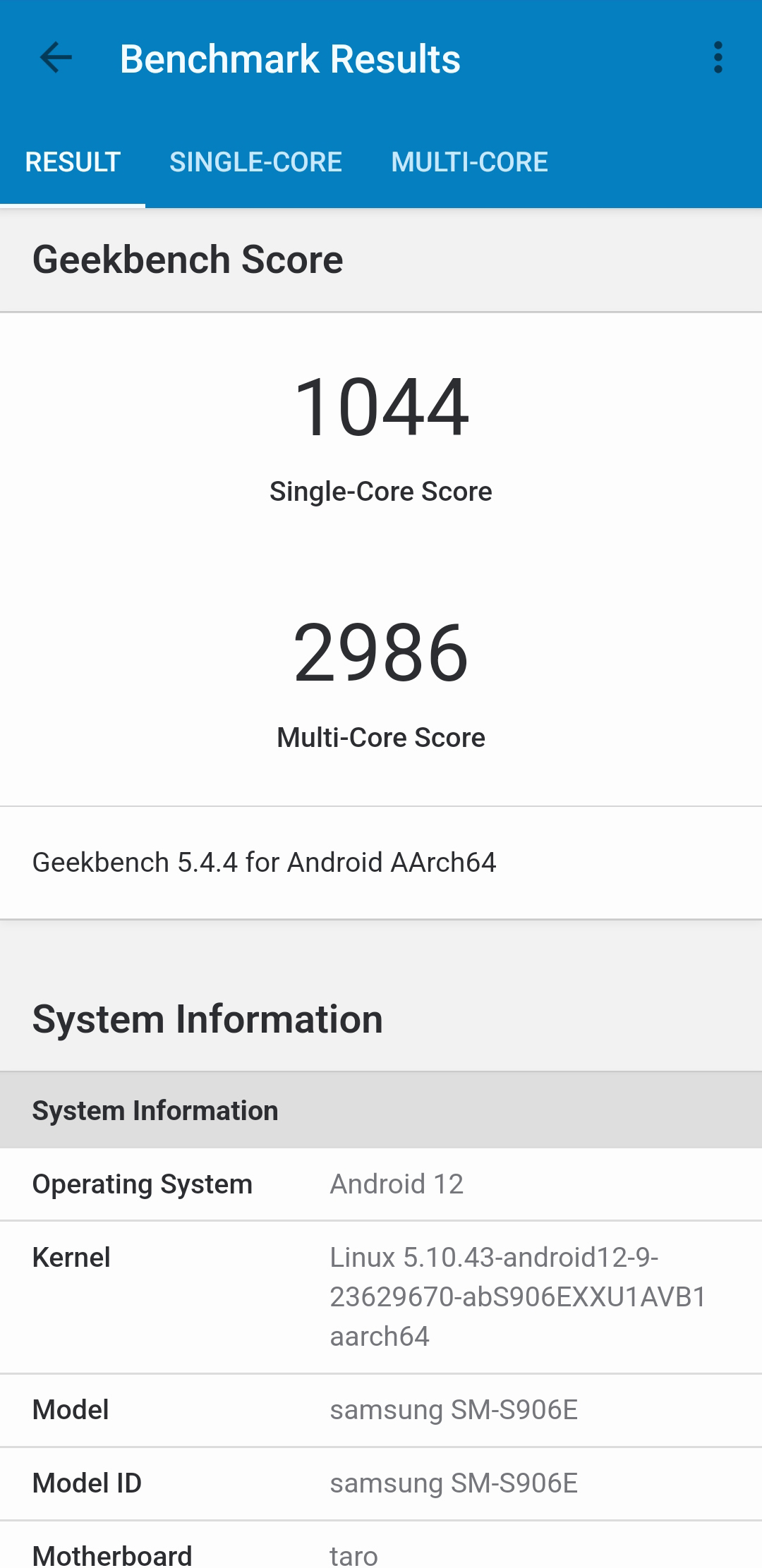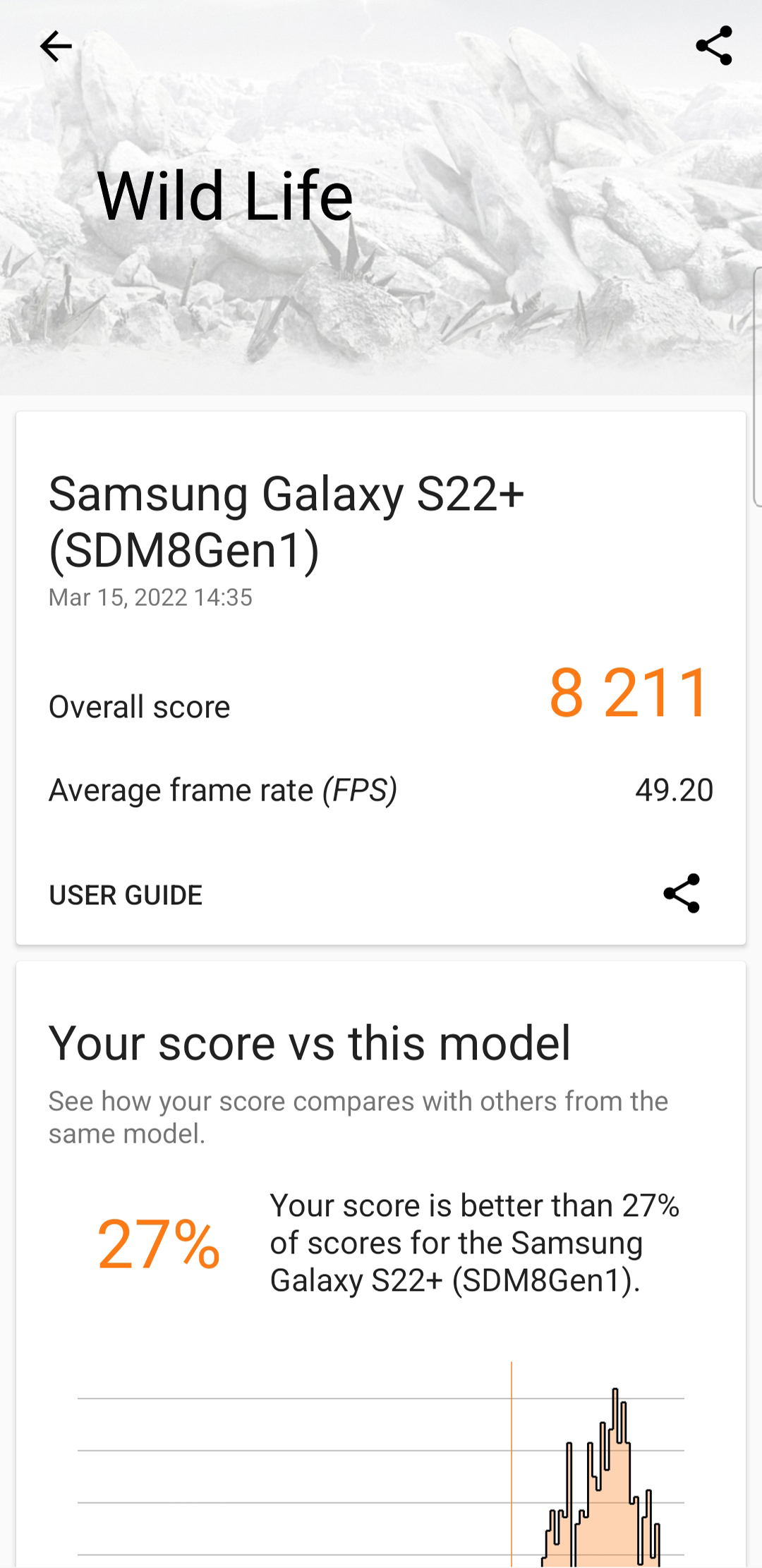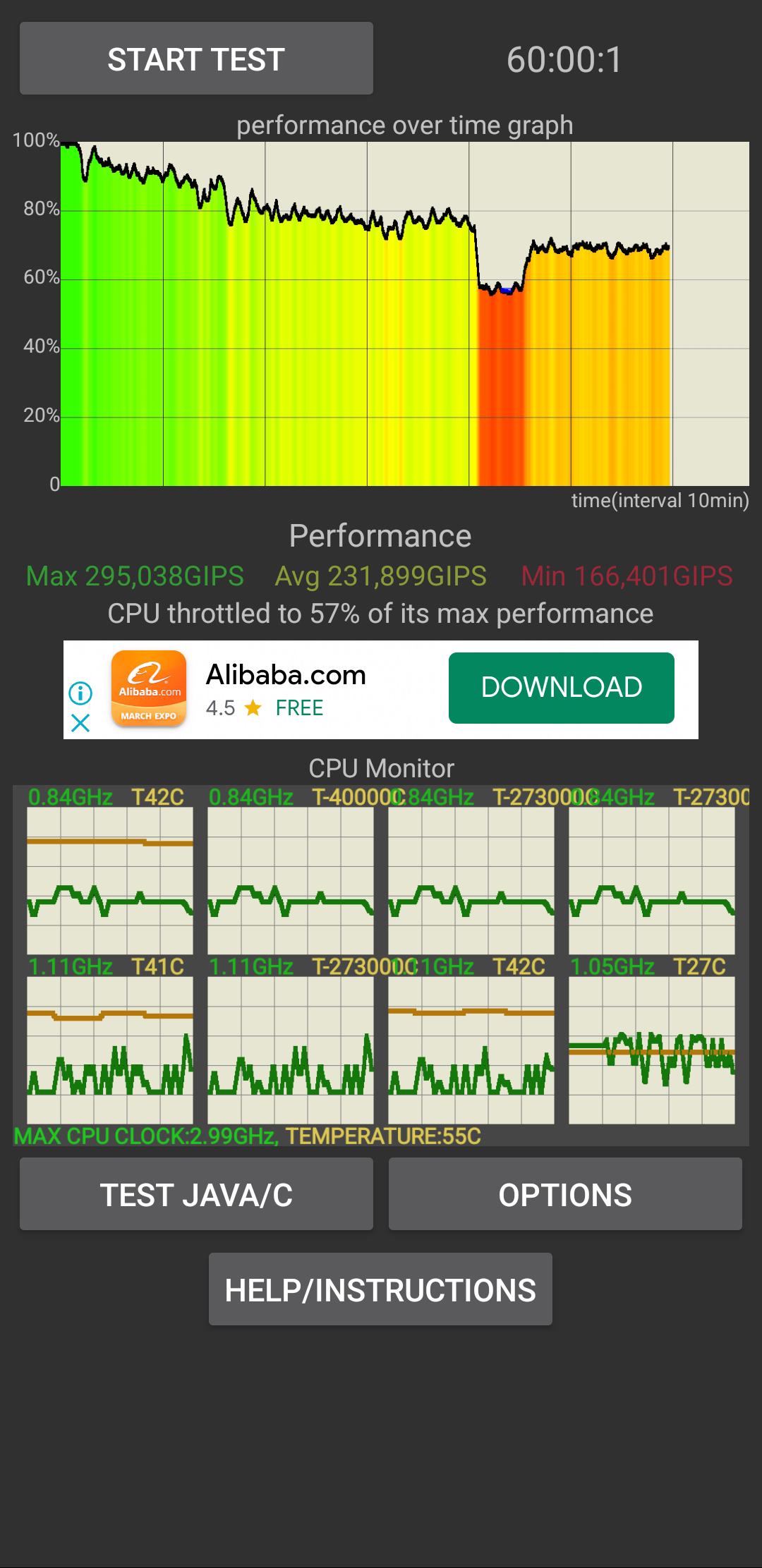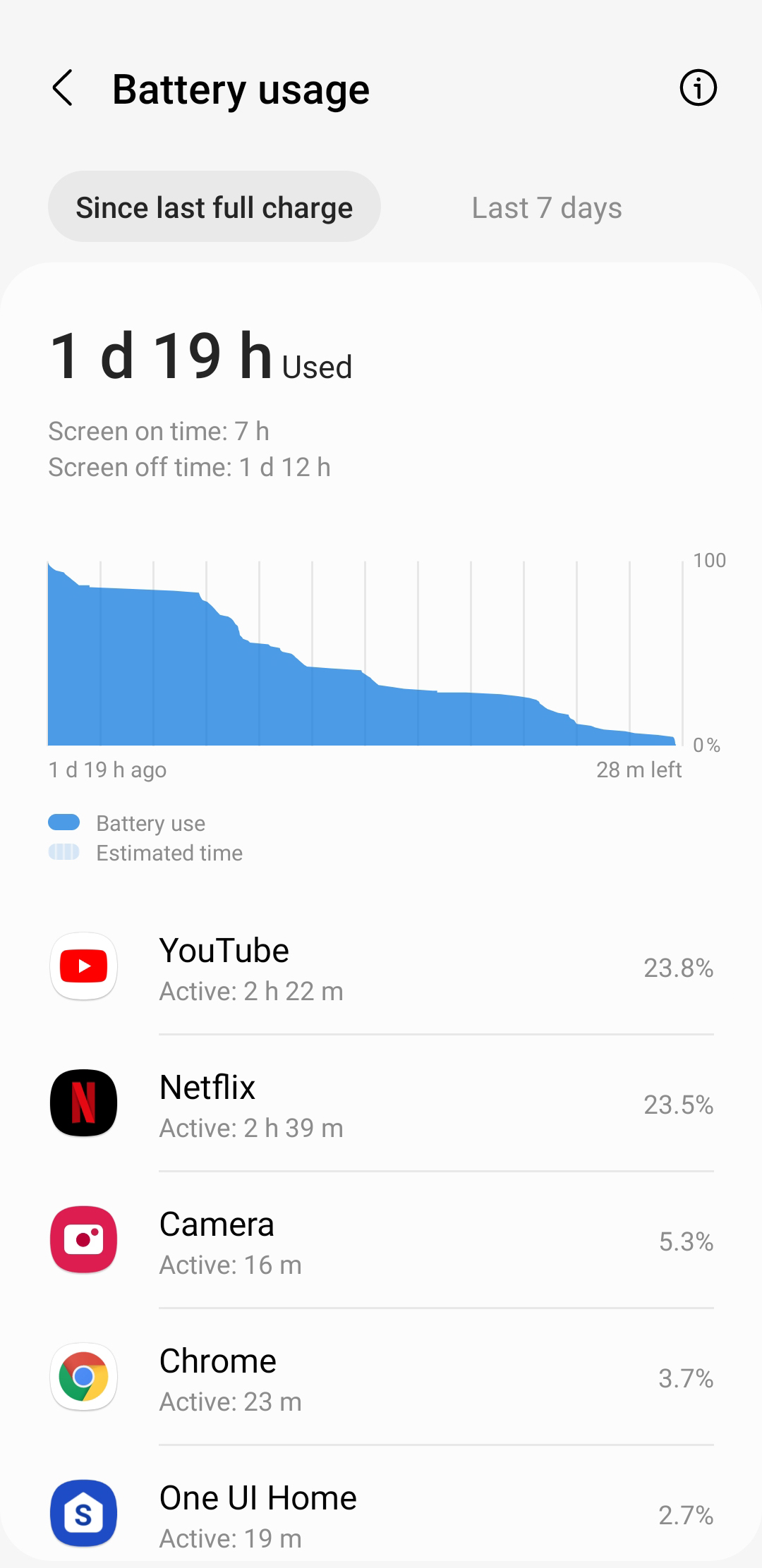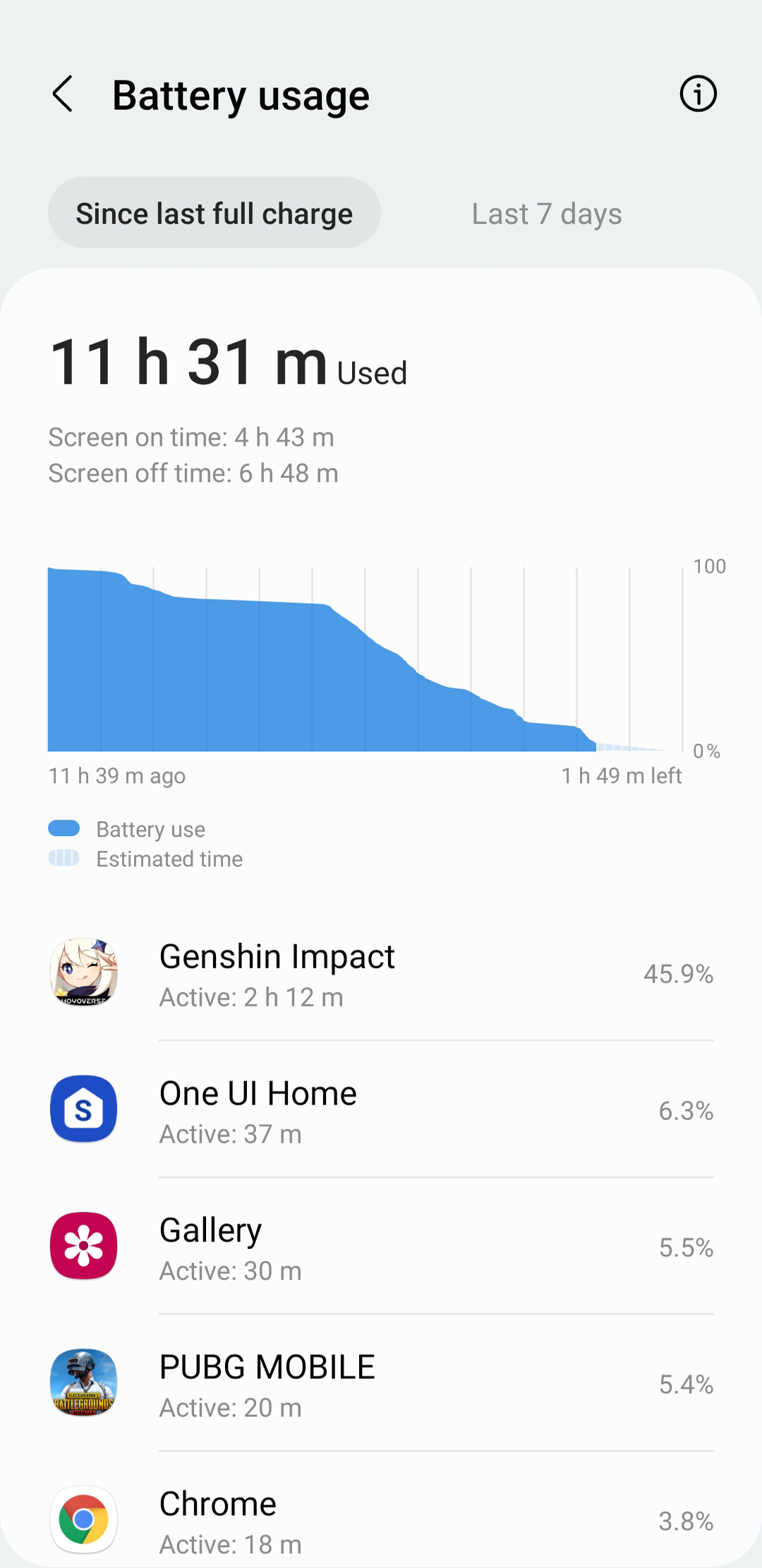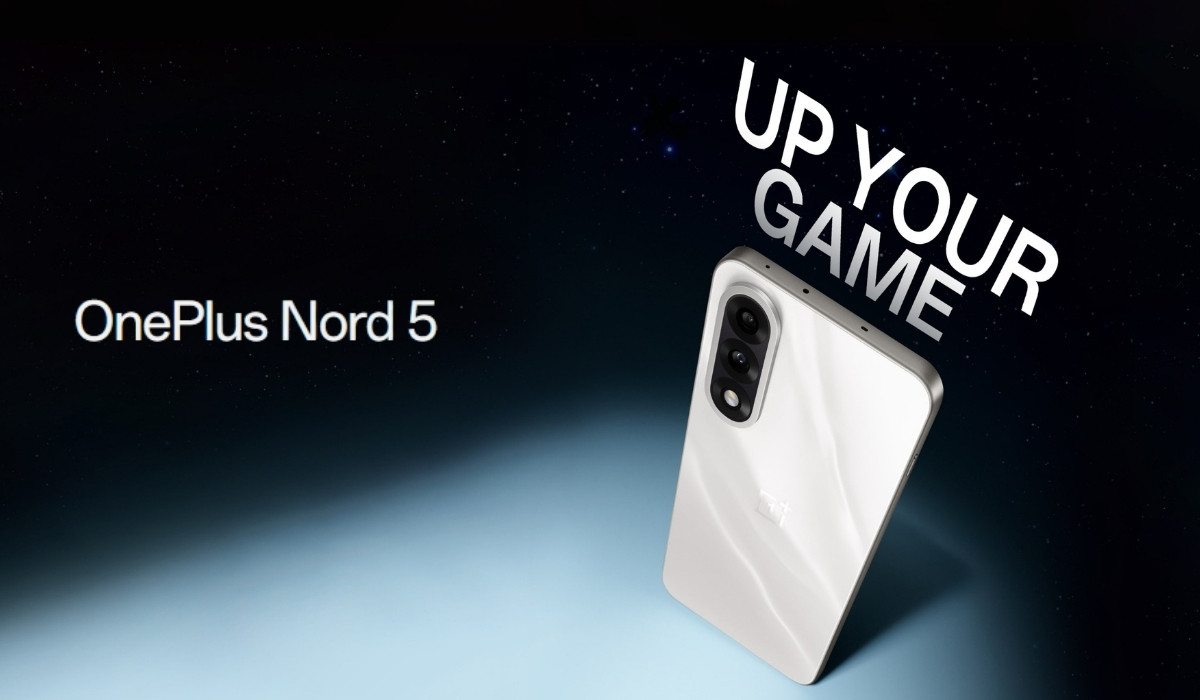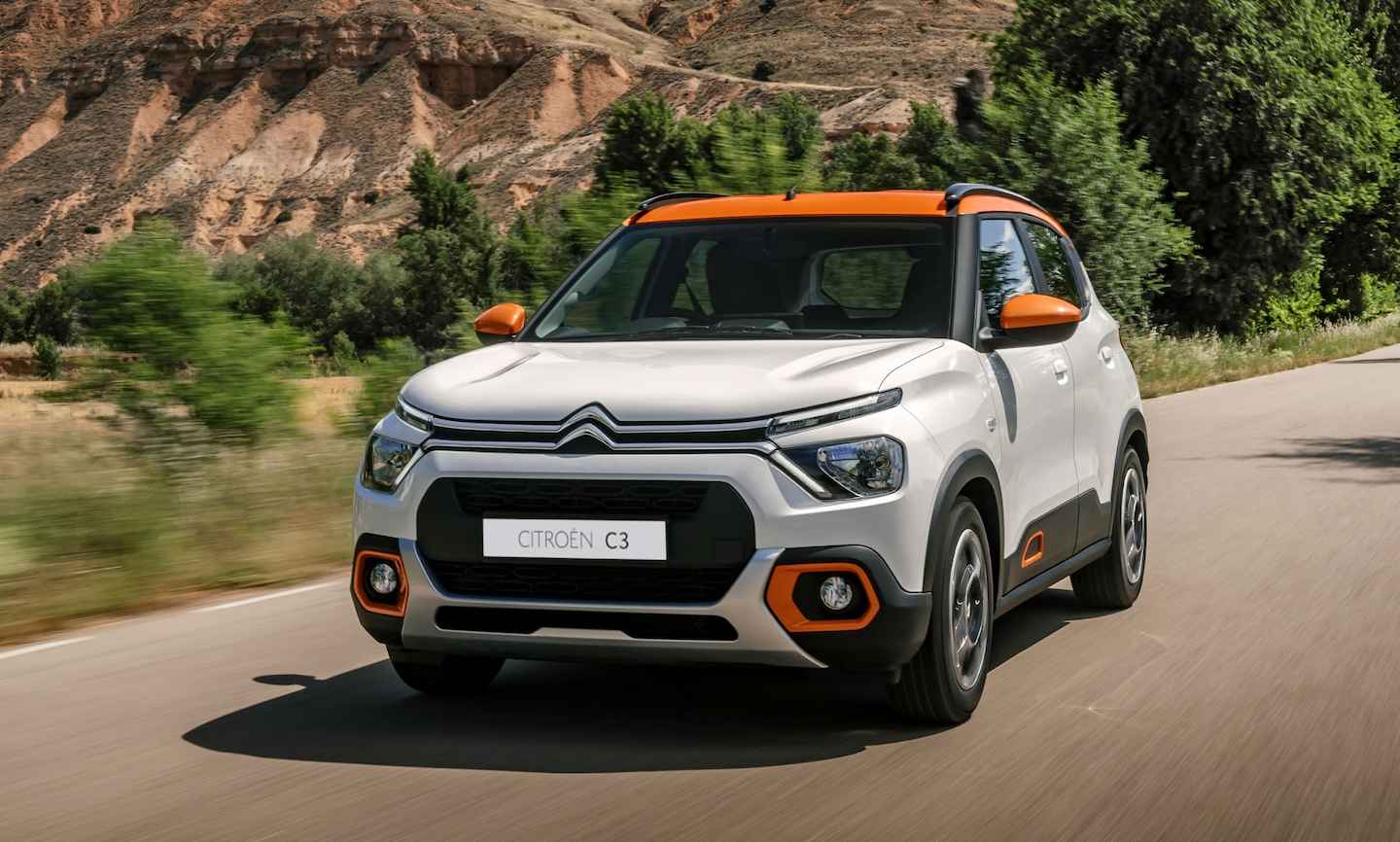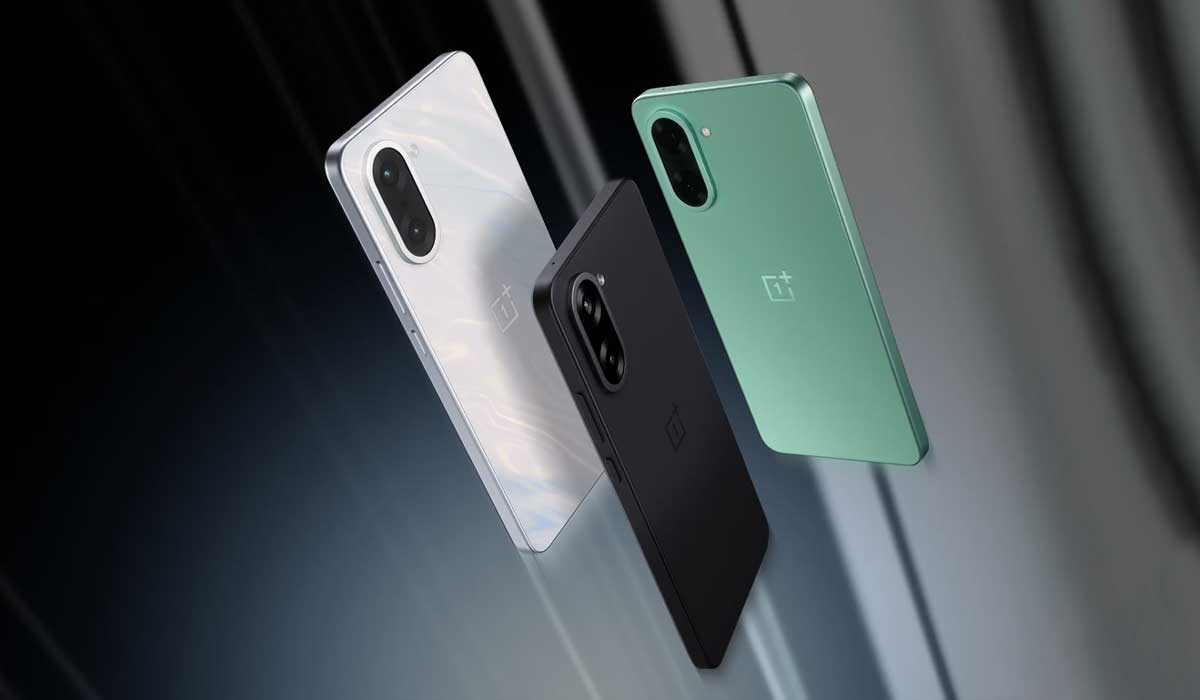Pros
- Premium build quality and design
- Excellent 120Hz bright display
- Impressive cameras
- Great stereo speakers
- Smooth software experience
- 4 years of major OS upgrades
- Good battery life with fast charging support
Cons
- The charger does not come with the phone
- The device can get hot to the touch
The Samsung Galaxy S22 Plus is the middle child in the Samsung Galaxy S22 family. It is not the cheapest, but neither is it the most expensive, like the S22 Ultra. It sits in the middle of the two.
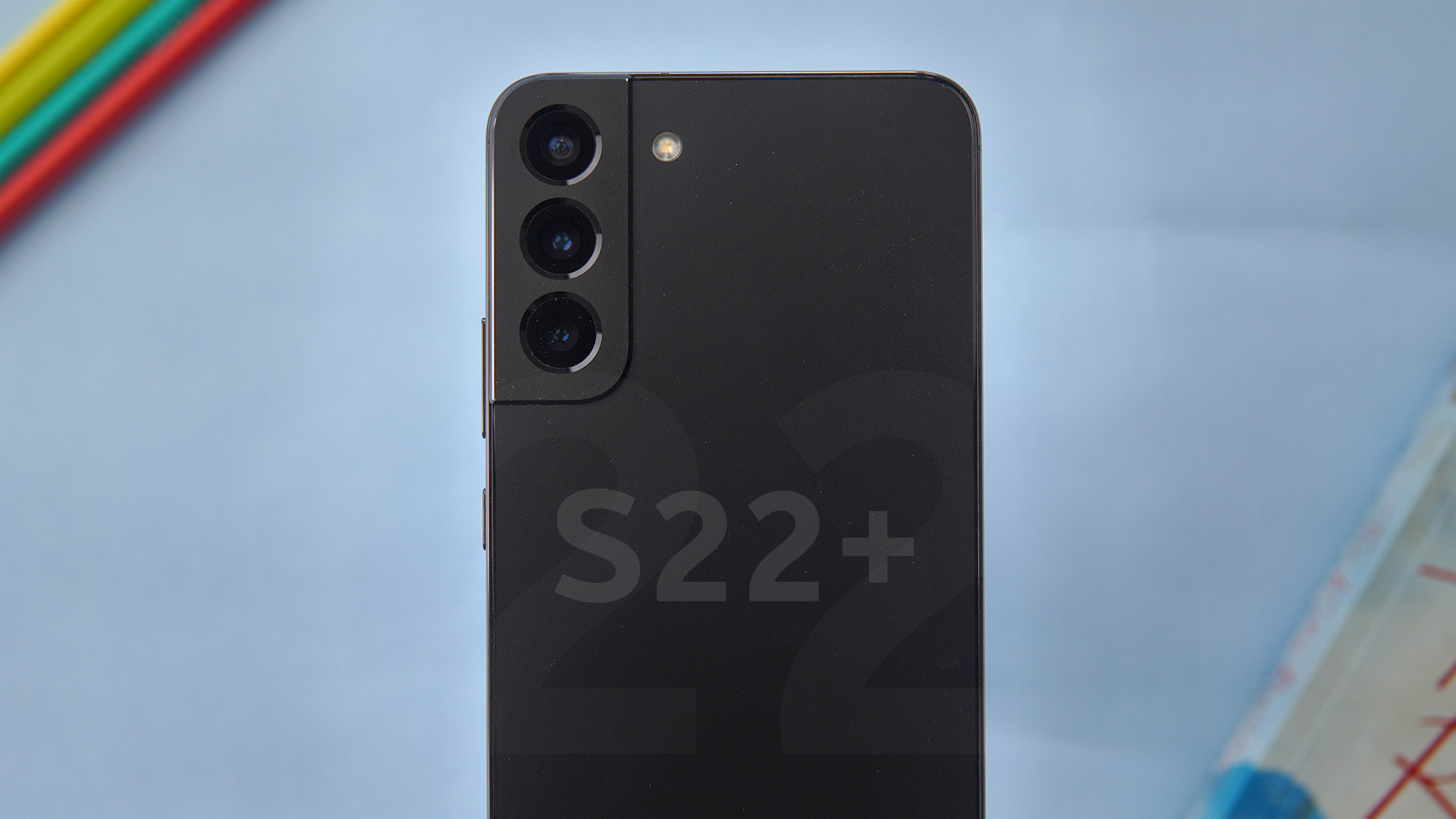
The Samsung Galaxy S22 Plus price in Nepal is Rs. 1,29,999 (8/256GB).
The phone’s design and features are more reminiscent of its younger sibling, the Samsung Galaxy S22, than of its Ultra sibling.
As I mentioned in my impressions, the S22 and S22+ may lack some of the headline features such as the 100x camera zoom or S-Pen found on the more expensive S22 Ultra, but they will appeal to a broader audience simply because they are more affordable (ahh… affordable in comparison to the Ultra) and include everything a typical consumer expects from a smartphone.
The S22 Plus is one of the best Android phones you can get in 2022. Having said that, I should also mention that the S22+ does not bring huge improvements over its predecessor, which in and of itself is not a bad thing by any means given that the S21+ was already such a great phone.
I’ll go into detail about the changes it’s brought as I begin my review of the Samsung Galaxy S22 Plus.
Samsung Galaxy S22+ Specifications
- Body: 157.4 x 75.8 x 7.6 mm, 195 g, IP68 dust/water resistant, Corning Gorilla Glass Victus+ back
- SIM: Dual SIM (Nano-SIM, dual stand-by)
- Display: 6.6 inches FHD+, Dynamic AMOLED 2X, 120Hz, 1080 x 2340 pixels, 19.5:9, 1750 nits (peak), HDR10+, Corning Gorilla Glass Victus+
- Chipset: Qualcomm Snapdragon 8 Gen 1 (4nm)
- CPU: Octa-core (1×3.00 GHz Cortex-X2 & 3×2.50 GHz Cortex-A710 & 4×1.80 GHz Cortex-A510)
- GPU: Adreno 730
- Memory: 256GB 8GB RAM, UFS 3.1, no SD card support
- OS: Android 12, One UI 4.1
- Rear Camera: 50 MP, f/1.8, 24mm (wide), 1/1.56″, 1.0µm, Dual Pixel PDAF, OIS
- 10 MP, f/2.4, 70mm (telephoto), 1/3.94″, 1.0µm, PDAF, OIS, 3x optical zoom
- 12 MP, f/2.2, 13mm, 120˚ (ultrawide), 1/2.55″ 1.4µm, Super Steady video
- Video: 8K@24fps, 4K@30/60fps, 1080p@30/60/240fps, 720p@960fps, HDR10+, stereo sound rec., gyro-EIS
- Front Camera: 10 MP, f/2.2, 26mm (wide), 1/3.24″, 1.22µm, Dual Pixel PDAF
- Video: 4K@30/60fps, 1080p@30fps
- Battery: Non-removable Li-Ion 4500 mAh battery, 45W fast charging, Fast Qi/PMA wireless charging 15W, USB Power Delivery 3.0, Reverse wireless charging 4.5W
- USB: USB Type-C 3.2, USB On-The-Go
- Misc: Fingerprint (under display, ultrasonic), accelerometer, gyro, proximity, compass, barometer
- Colors: Phantom Black, Phantom White, Pink Gold
Samsung Galaxy S22+ Price in Nepal: Rs. 1,29,999 (8/256GB)
Samsung Galaxy S22+ Review
Design
- 157.4 x 75.8 x 7.6 mm
- 195 g
- IP68 dust/water resistant
- Corning Gorilla Glass Victus+
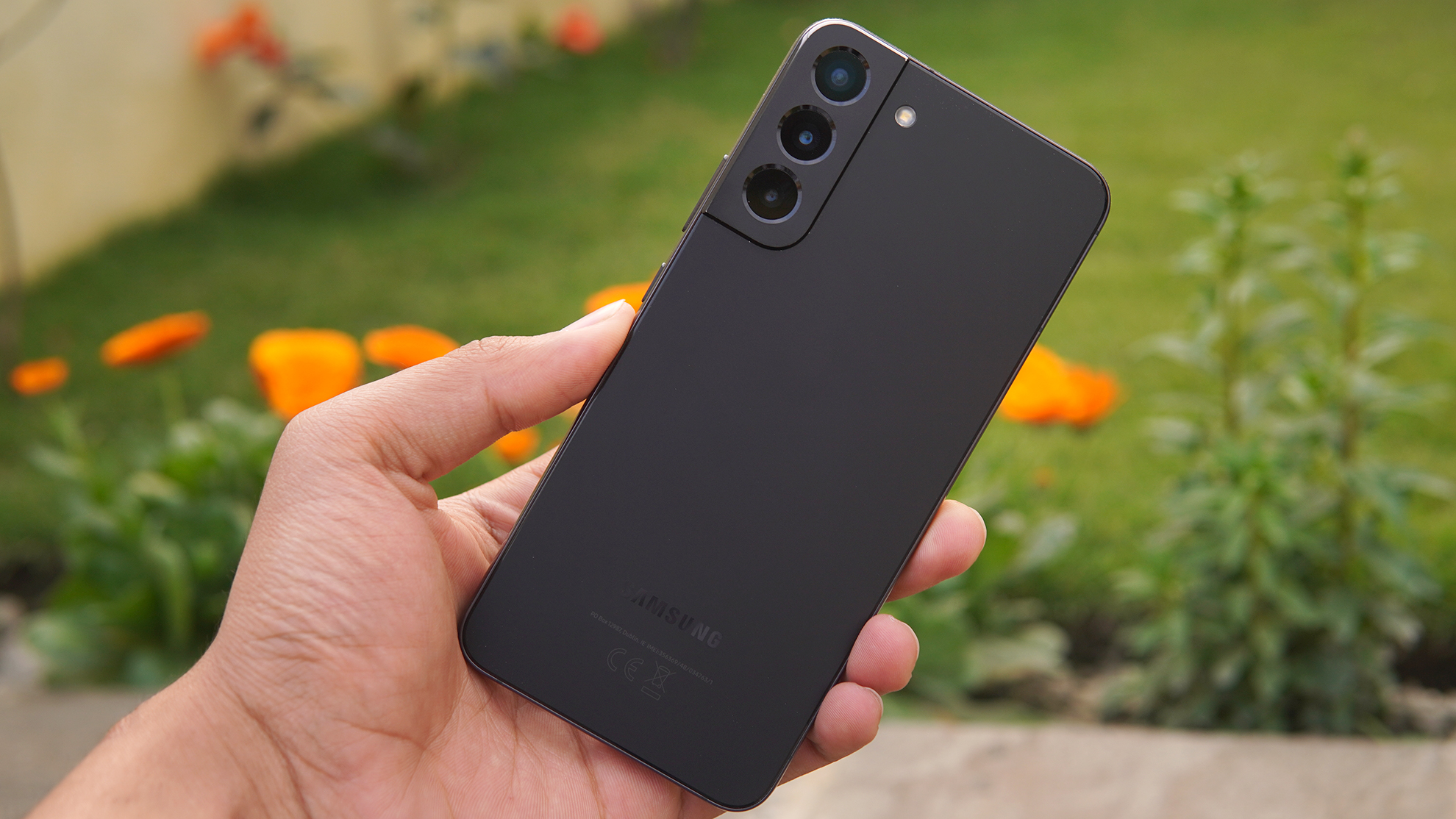
The design of the S22+ is remarkably similar to the Galaxy S21+, but there are some notable changes that differentiate the Galaxy S22 from its predecessor.
The first thing I noticed when I held the device was the flatter frames and sharp edges. The S21+ had a curved frame and smooth edges. Due to this design change, I could easily tell if I was holding the S22+ or the S21+ without looking.
It’s not that the frames are completely flat like in the iPhone 13 series; the S22+ has some curve to it, just not as before.
The sides feel flat and the device is very boxy. You can feel the sharp edges when holding it.
The S22 series has an aluminum frame which Samsung calls “Armor Aluminium“. The same material was seen on the Samsung Galaxy Z Fold 3 and Z Flip 3.
Speaking of the build material, one other notable change on the S22 Plus is the back material. It’s now glass instead of plastic. I am using the Phantom Black one—by the way, it also comes in Phantom White and Pink Gold in Nepal—and the matte finish on it does an excellent job of hiding fingerprint smudges.
I should warn you that the phone is very slippery. If you intend to use the device without a case, as I did, you need to be extra careful not to slip the device from your hand. For protection, Samsung says the back is made of Gorilla Glass Victus+, which should make it more durable, but it’s still best to avoid dropping it regardless. It’s also IP68 rated for protection against dust and water.
Looking at the camera island, we can still see Samsung’s popular Contour Cut design. However, it’s slightly different this time.
In the S21 Plus, it appeared that the camera island was wrapped around by the frame itself. However, the S22+ does not have such a curvy camera housing anymore. The S22 Plus’s camera design still looks like it blends with the frame, but the camera island now has a sharp end—instead of a curve—where it meets the frame.
Both the power and volume buttons are on the right side as before. However, they are placed slightly lower this time (compared to the S21+), which goes unnoticed unless you compare them side by side. It’s probably because the device itself is also slightly smaller in height than the S21+.
On the front, it looks stunning with its minimal and symmetrical bezels, lending it a modern appearance. I found the Ultrasonic fingerprint on the display to be really fast and reliable as before.
Above the punch-hole cutout in the display’s upper center is an earpiece. It’s quite small and difficult to see even when looking at it intentionally. Don’t get fooled by the size, though; the earpiece doubles as a second speaker, and it’s loud and clear.
LATEST: Xiaomi 12 Pro with Snapdragon 8 Gen 1 and 120W Charging Now Available in Nepal
Display
- 6.6 inches Dynamic AMOLED 2X
- 120Hz
- 1080 x 2340 pixels
- 1750 nits (peak)
- HDR10+
- Gorilla Glass Victus+
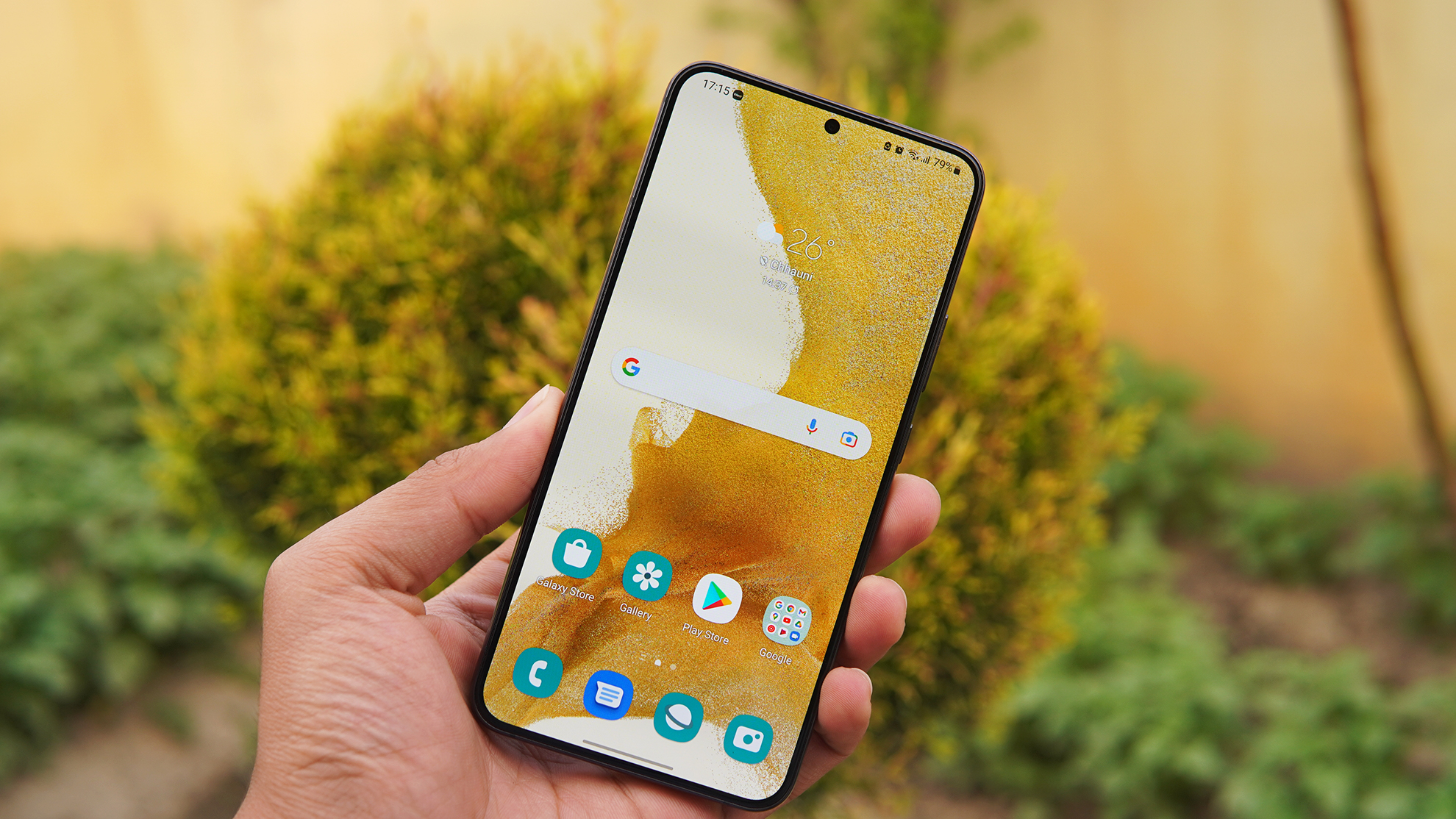
Samsung has a reputation for producing the best display panels for its devices. The S22+ has the same quality display.
The colours are very accurate and vibrant. The display delivers an excellent viewing experience, whether you’re doing basic tasks or watching high-definition movies.
The colours are extremely vivid, accurate, and bright.
As for the size, it’s 0.1-inch smaller than before, measuring 6.6 inches diagonally. It has the same FHD+ resolution as before. The display is really bright and I had no problem viewing it even on a bright sunny day.
The upgrade we see here is at the peak brightness level. Samsung claims it can reach 1750nits at peak brightness, up from 1300nits.
The more expensive S22 Ultra also has the same peak brightness claim, while the regular S22 sits at 1300nits. Well, the jump from peak brightness on paper sure seems huge, but in real-life usage, it’s hard to notice since the peak brightness is only obtained in a small screen area.
Samsung also introduced a new feature called “Vision Booster” in the Galaxy S22 series. According to Samsung, it adjusts the display to the lighting around the device using its light sensor and improves the colour contrast. The said technology may be doing its job in the background, but I couldn’t tell how much of a difference it made.
Moving on, the display is super smooth, thanks to its 120Hz adaptive refresh rate. Samsung initially said that the display’s refresh rate can drop to as low as 10Hz to save the battery, but then updated their website to state that the minimum refresh rate is 48Hz. This had created a lot of confusion.
Later, Samsung clarified that while the processor can transfer data to the display at 10Hz, the display itself cannot refresh at that rate. However, in my testing, I found its LTPS display to go as low as 24Hz when showing a static image, which is lower than what Samsung advertises.
Camera
- Rear Camera: 50 MP (main), f/1.8, OIS
- 10MP (telephoto), f/2.4, OIS, 3x optical zoom
- 12MP(ultrawide), f/2.2, 120˚
- Front Camera: 10MP, f/2.2

There are no visible changes in the placement of the cameras. As before, the camera configuration includes an ultrawide camera, a primary camera, and a telephoto camera.
However, the sensors of the primary camera and the telephoto camera are changed. The new primary camera features a 50MP sensor (ISOCELL GN5), up from 12MP, while the new telephoto camera features a 10MP sensor, down from 64MP.
The 12MP ultrawide and the 10MP front camera, on the other hand, have the same sensors as the S21+.
NORMAL PHOTOS
The 50MP main camera uses Tetracell technology, which transforms four pixels into a larger pixel, producing a 12MP image.
The photos taken from the main camera are great, with good details and dynamic range. I found it to be wider than before, which made me use the ultrawide camera less.
The photos are really colourful and sharp. They may appear to be slightly more vibrant than they are, but it does not overdo it. So, overall, I really like the photos it takes.
It also focuses the subject fast and accurately, with nice natural bokeh.
ULTRAWIDE PHOTOS
As I previously mentioned, the S22+ uses the same ultrawide camera as before, which is not a bad thing as the S21+ already had an excellent ultrawide camera.
There are no noticeable colour differences when switching to the ultrawide camera from the main camera. The photo quality is consistent, which is impressive.
When compared to the main camera, the ultrawide angle photos may appear to lack some crispness. However, it does not really matter as it goes unnoticed in ultrawide shots. The distortion is also fine; nothing abnormal.
ZOOM PHOTOS
The other change we see in the camera of the S22+ is the new 10MP telephoto camera with 3x optical zoom. The S21+ had a 64MP telephoto camera with 1.1x optical zoom (3x hybrid zoom).
The telephoto camera captures very detailed and crisp photos. The colours are vibrant and consistent as with the other two cameras. It preserves good details and the dynamic range capability is also great.
When I used the phone’s camera, I noticed that when it is set to 3x zoom, the phone does not always use the telephoto lens. Occasionally, depending on the scene, it will automatically switch to the primary camera and crop the footage.
And when this occurs, there is no way to force the camera to use the telephoto lens, which I found a little bothersome. However, it is not a deal-breaker.
Moving on, the phone can digitally zoom up to 30x. The photos are acceptable up to 10x zoom. However, the sharpness and details are not that great. The 30x photos are very blurry and grainy, but they’re usable in certain cases.
Naturally, the digital zoom would be inferior to the optical zoom. However, post-processing does a great job of improving the image.
LOW LIGHT PHOTOS
Samsung introduced the term “Nightography” with the S22 series. It basically means that the phone is capable of capturing good photos even at night.
The phone automatically enters night mode when it detects low light. You can also manually turn on the night mode. All of the cameras support night mode. The mode takes long exposure shots, resulting in bright photos.
The photos have good details and clarity. There are some grains, but they are very minor.
LATEST: Samsung S22 Ultra Review: The Ultimate Flagship Phone
PORTRAIT PHOTOS
The Samsung Galaxy S22+ has an excellent portrait mode. You can take photos in portrait mode from the 1x and 3x camera lenses. I prefer the 3x mode for the portraits. They have a good depth effect.
It is quite interesting how well it separates the subject from the background. It occasionally struggled to distinguish the foreground from cluttered backgrounds. However, it did an excellent job of identifying even minute details such as hair most of the time.
FRONT CAMERA
The 10MP front camera too captures pleasant photos. The selfies are sharp with good details. It also maintains a good dynamic range but in some cases, the highlights were blown out.
The skin tone appeared natural, and the camera consistently exposed the subject well. When taking selfies, the device automatically does some face retouching, resulting in smooth skin.
VIDEOS
All of the cameras can shoot 4K video at 60 frames per second. The device can also shoot 8K at 24 fps. This year, the device can shoot 8K from its main camera, thanks to the new main 50MP primary camera. In the S21+, the 8K had to be shot using the 64MP telephoto camera.
Colours in the video from all the cameras were good and uniform. The video was also well-stabilized with good details. It may seem like a bit of a oversharpen is going on, but, overall, the video is really great.
The footage was a little jittery and grainy when shot in low light. Nonetheless, I am impressed with its video quality.
Performance
- Qualcomm Snapdragon 8 Gen 1
- Octa-core (1×3.00 GHz Cortex-X2 & 3×2.50 GHz Cortex-A710 & 4×1.80 GHz Cortex-A510)
- Adreno 730
- 256GB 8GB RAM
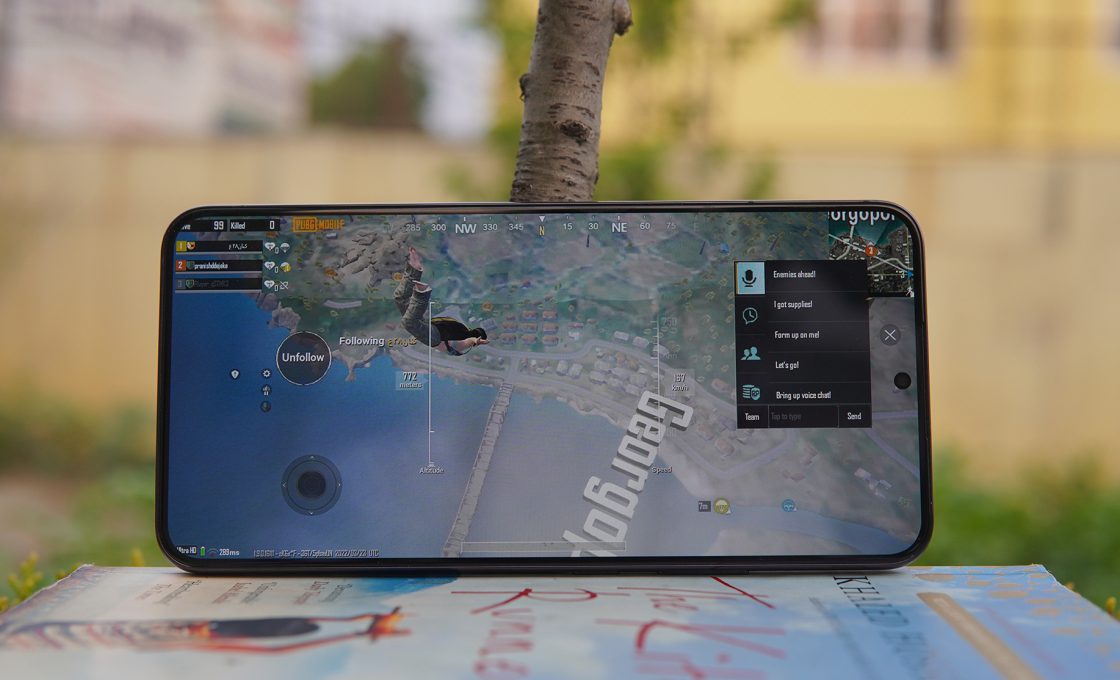
Samsung brought the Snapdragon variant to Nepal this year instead of the Exynos one. It is equipped with the latest Snapdragon 8 Gen 1 processor built on a 4nm process node with Adreno 730 GPU.
The processor has a single powerful 3.0GHz Arm Cortex-X2 flagship-core, three performance and efficiency 2.50GHz Cortex-A710 big-cores, and four power-efficient 1.80GHz Cortex-A510 little-cores.
It comes with 8GB RAM and 256GB storage.
BENCHMARK
On Geekbench 5, the Samsung Galaxy S22 Plus scored over 1000 in a single-core score and near to 3000 in a multi-core score. Testing its GPU performance, the device scored over 8200 in 3DMark (Wild Life).
These tests were already not realistic. We run these unrealistic tests solely to gain a sense of the system’s capability. The recent news of Samsung throttling over 10,000 apps but not benchmarking apps, including Geekbench 5 and 3DMark, suggests that the scores are even less realistic now.
Samsung later clarified that they did this to save the device from overheating and consuming high power. We all know how power-hungry the new Snapdragon 8 Gen 1 is. It is the reason that I noticed the device getting hotter than before. So, we conducted some thermal throttling tests as well.
I ran the CPU throttling test for 60 minutes. The test dropped the performance gradually to 80% of its full performance in 40 minutes. Then, it saw a sudden drop in performance and throttled down to below 60% for a few minutes before returning to around 70%.
The test made the device hot, but not unbearable. Keep in mind that these types of tests are not practical in real life as normal day-to-day tasks are not as demanding.
In real-life usage, the phone performed wonderfully. I did not face any performance issues, as it handled everything I throw at it with ease. As mentioned earlier, the phone does get warm when used for a while.
GAMING
I played two games on the Samsung Galaxy S22 Plus: PUBG Mobile and Genshin Impact.
Due to the fact that this is a flagship processor, it can go up to Ultra HD Graphics and Ultra Frame Rate when playing PUBG Mobile.

In PUBG Mobile, I initially set the graphics to HDR and the frame rate to Extreme. It delivered a smooth gameplay experience with an average frame rate of 56 FPS (Frames per second). Then when Graphics and Frame Rate were set to Ultra HD and Ultra, respectively, it provided an average of 40 FPS.
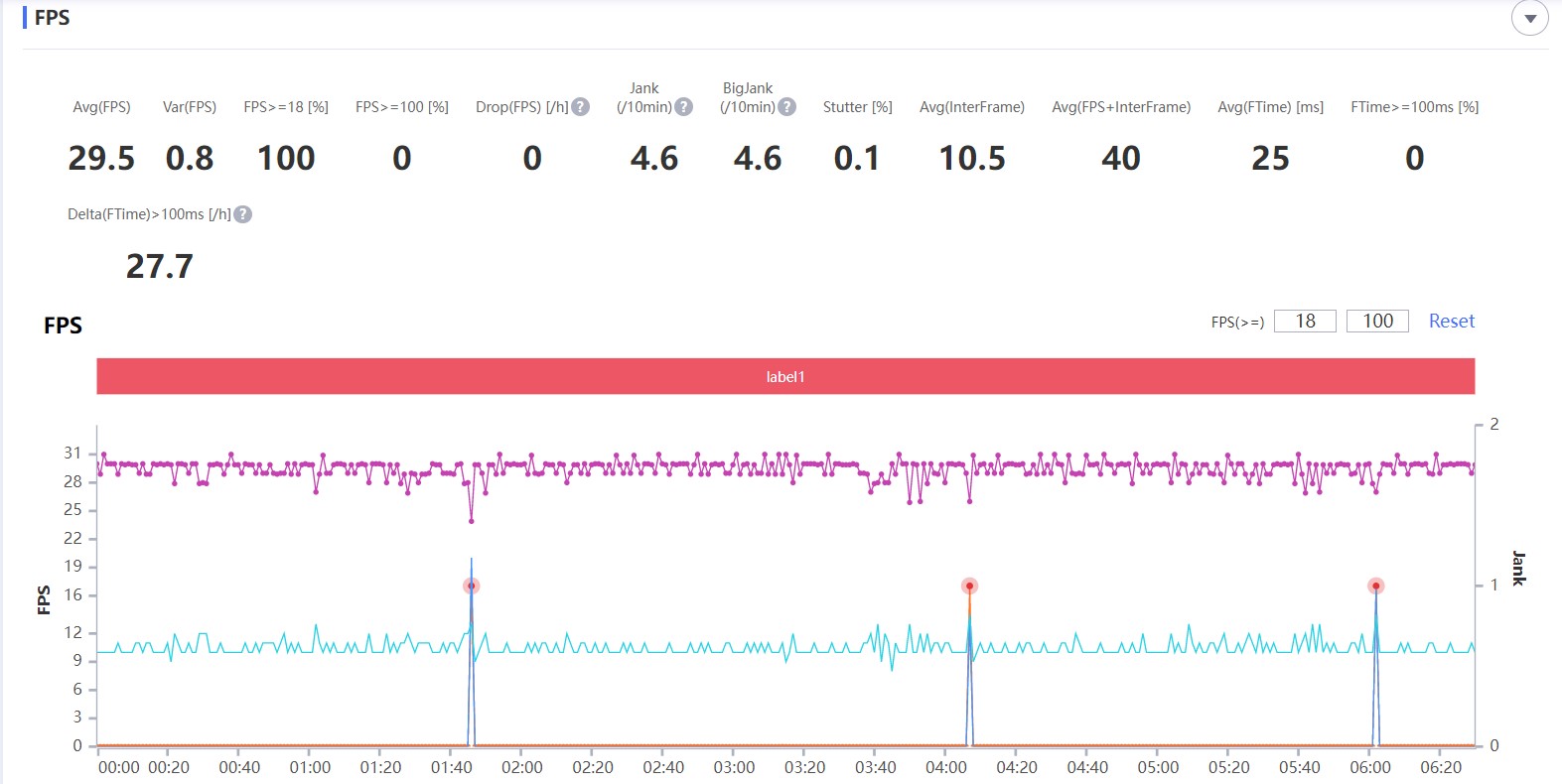
Similarly, I put the graphically taxing Genshin Impact game to the test. It averaged roughly 30 FPS while using the default medium settings. After playing the game for an extended amount of time, a few stutters were observed here and there.
Battery and OS
- Non-removable Li-Po 4500mAh battery
- 45W Fast Charging
- Android 12, One UI 4.1
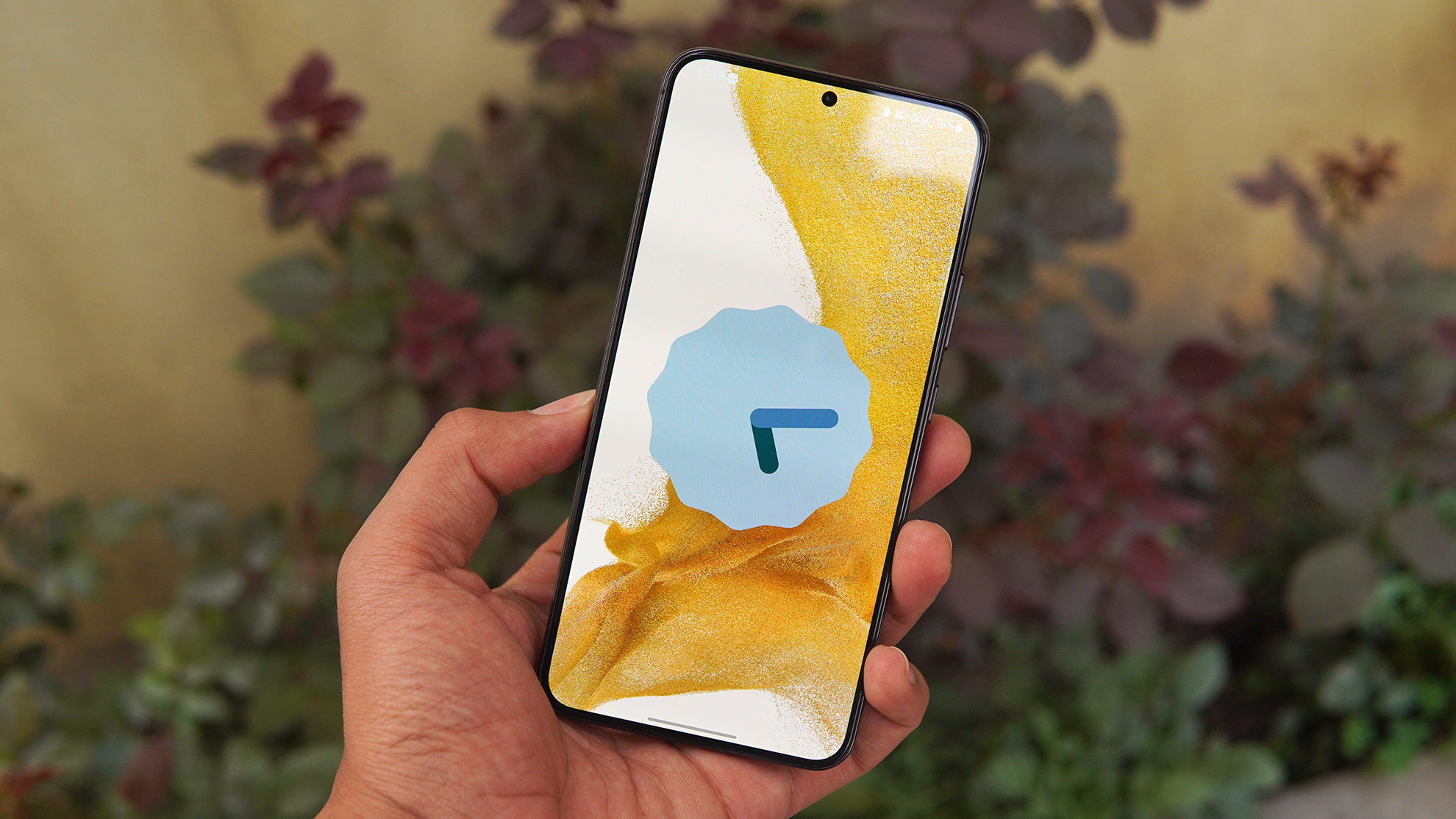
Samsung put a smaller 4500mAh battery in the Galaxy S22+ this year. It’s 300mAh less than the S21+.
Nonetheless, the Galaxy S22 Plus still provided a great battery life for me. It gave me around 7 hours of screen-on-time in normal usage, which is not as impressive as the S22 Ultra, but sufficient for a normal person. While I used it more intensively, such as when I was playing some games, it provided me with around 5 hours of screen-on-time.
To note, I kept the adaptive refresh rate (120Hz) of the display turned on.
For charging, Samsung says that the device supports up to 45W fast charging. Unfortunately, the charger does not come with the phone and I also do not have a 45W fast charger.
So, I used a fast charger that was available to me, which happened to be Xiaomi’s 33W fast charger. It charged the device from 0% to 100% in around 1.5 hours, which is not bad.
In terms of software, the device comes with Android 12 out-of-the-box with One UI 4.1 on top. This year Samsung committed to offering 5 years of software support—four major OS updates and fives years of security patches—for its flagship devices.
The One UI 4.1 is a minor upgrade to the One UI 4.0. It brought a few new features such as the ability to use up to 8GB of its onboard storage to increase virtual RAM via RAM Plus—the One UI 4.0 allows for only 4GB of onboard storage—and some minor changes.
The UI lets you personalise the system colour with its “Color Palettes” feature. The feature changes the colours of system apps and their icons, quick settings, lock screen clock, and some Google apps based on the wallpaper the user sets.
Overall, the software interface is smooth, easy to use, and allows for customization.
Should You Buy the Samsung Galaxy S22 Plus?
The Samsung Galaxy S22+ is a really great device. Users had expressed dissatisfaction with the plastic back of the S21+. This year, Samsung has provided a glass back for the S22 Plus.
It is also slightly smaller than the S21+, albeit the difference is not significant. It did, however, result in a more compact design for a phone with a 6.6-inch display.
It’s hard to find any major drawbacks to this phone. It has a premium build quality and looks, an excellent display, awesome performance, an impressive set of cameras, and great battery life.
It’s also less expensive than the S22 Ultra, while still providing all of the features that a smartphone user could possibly require. If you’re considering purchasing a flagship device for the year 2022, I’d propose the Samsung Galaxy S22 Plus to you.
However, if you are upgrading from the S21+, you should know that there are not many major upgrades or changes.
READ NEXT: Samsung Mobiles Price in Nepal: Features and Specs
What do you think about the Samsung Galaxy S22 Plus? Let us know in the comments!
Also, watch our impressions of the Samsung Galaxy S22+ in Nepali.
-
OnePlus Nord 5 Launching Soon in Nepal: OnePlus IS Back?HIGHLIGHTS The OnePlus Nord 5 price in Nepal could be Rs. 68,999 (8/256GB). It has…
-
Citroen C3 Price Slashed in Nepal — Now Rs. 29.99 LakhsHIGHLIGHTS Citroen C3 price in Nepal is Rs. 29.99 Lakhs. C3 is powered by a…
-
OnePlus Nord CE 5 Launching Soon in Nepal with 7100mAh BatteryHIGHLIGHTS The OnePlus Nord CE 5 price in Nepal could be Rs. 48,999 (8/256GB) The…


